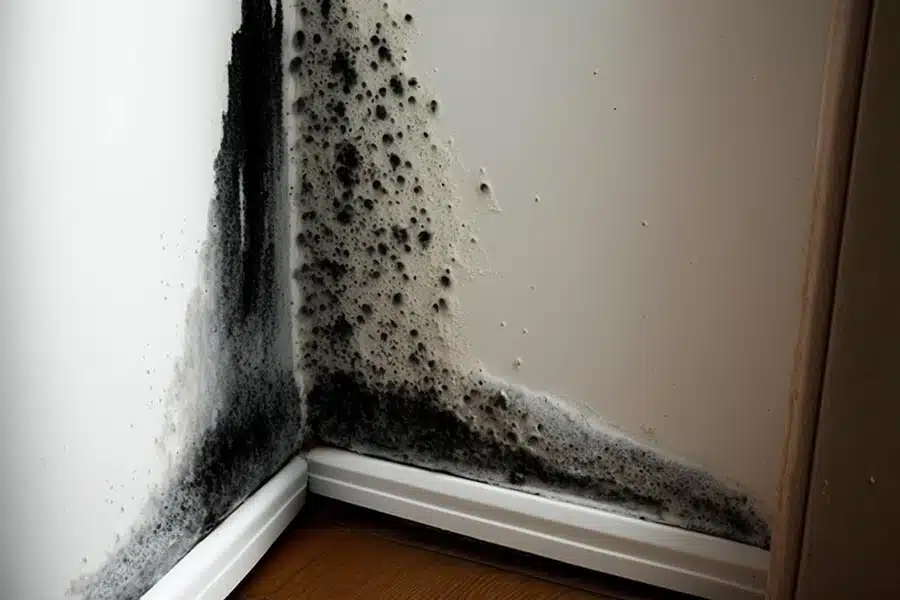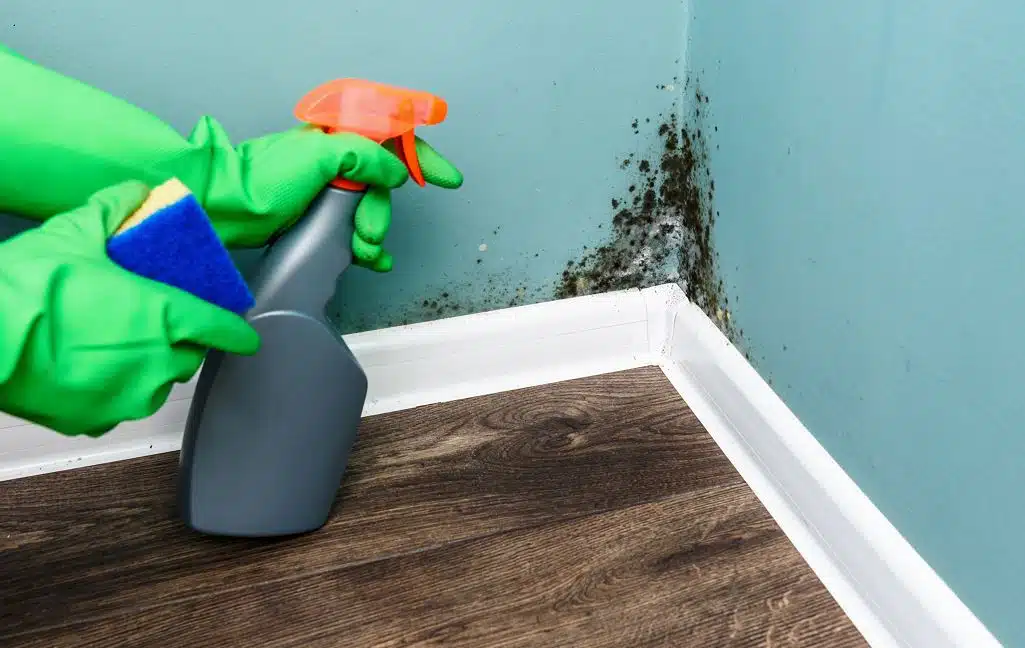Have you spotted a small black spot in a corner of the wall? At first, you think it’s probably a bit of dust or a forgotten mark… and then the days go by, and this area widens, darkens, and sometimes, a musty smell begins to be noticed. Nothing trivial about that. These marks are often a sign that something is going on behind the walls. But don’t panic: with a few good reflexes, you can take action, limit the damage, and restore a healthy interior.
Why do these black spots appear? (It’s not just a cleaning issue)
A wall that turns black, especially in a corner, is rarely just a matter of cleanliness. More often, it’s excess humidity that’s the cause.
In poorly ventilated rooms—a bathroom where steam gets trapped, a kitchen that heats up without openings, or even a bedroom that’s rarely aired—humid air can’t escape. It ends up condensing on the cold walls… and that’s where mold finds its favorite playground.

It can also be due to leaks from outside. An overflowing gutter, a damaged roof, a porous wall, or even water rising from the foundations… all of these can cause these infamous stains.
And sometimes, it’s the insulation that works against you. A “thermal bridge”—a place where the temperature varies greatly between indoors and outdoors—can create a cold spot where moisture can easily accumulate.
A small detail that we don’t always think about: furniture placed too close to the wall. Without space for air to circulate, humidity stagnates and mold discreetly settles behind the sofa or dresser.
According to the ANAH (National Agency for Housing and Housing), one in five homes in France shows signs of persistent damp. Suffice it to say, you’re far from alone in this situation.
A golden tip: don’t underestimate these hidden corners. They’re often the first to “speak” when something isn’t right.
How can I react immediately to prevent it from getting worse?
As soon as you notice a dark spot, don’t wait for it to spread. The faster you act, the more you limit the damage.
Start by thoroughly ventilating the room, morning and evening, even if it’s cold. Ten minutes is enough to refresh the air and remove moisture. And if you’re in a room that’s often humid (bathroom, laundry room, etc.), this is even more important.
Next, you need to tackle the stains. A mixture of warm water and white vinegar can work wonders. For tougher mold, a little hydrogen peroxide can also be effective. But be careful: avoid using vinegar on natural stone or marble surfaces, as it could damage them.
Remember to move furniture away from the wall, even just a few inches, to allow air to circulate. You’ll see, it makes all the difference.
And if the air remains heavy or humid despite everything, consider installing a moisture absorber or a small electric dehumidifier. It can make all the difference, especially in small spaces.
Bonus tip: In winter, open the windows for just a few minutes in the morning and evening. This is enough to clear the condensation that builds up overnight.
And to combine business with pleasure, you can add a few drops of tea tree essential oil to your cleaning water. In addition to its fresh scent, it’s known for its antifungal properties.

How can we prevent it from coming back? (Because we don’t want to do it every month)
Once the walls are cleaned, the most important thing is prevention. Ideally, you want to address the problem at its root.
If your ventilation system isn’t adequate, consider installing a mechanical ventilation system or at least improving your air extraction. Good ventilation works wonders.
Also keep an eye on the humidity level in your home. A small hygrometer costs next to nothing, and you’ll quickly know if the air is too humid. The right range? Between 40 and 60%.
If your walls are prone to moisture, you can also apply a special anti-humidity paint. It doesn’t do everything, but it provides a welcome layer of protection.
And if you have any doubts about leaks or an insulation problem, it’s best to call a professional. A tradesman or a humidity expert will be able to provide a proper diagnosis. Sometimes, what you see on the wall is just the tip of the iceberg.
Absolutely avoid: painting directly over a mold stain, hoping it will “hide the problem.” It’s a cover-up, and it will come back sooner or later. The same goes for gas space heaters without proper ventilation: they release water vapor, which only makes the situation worse.



